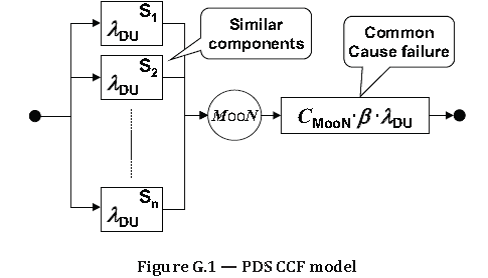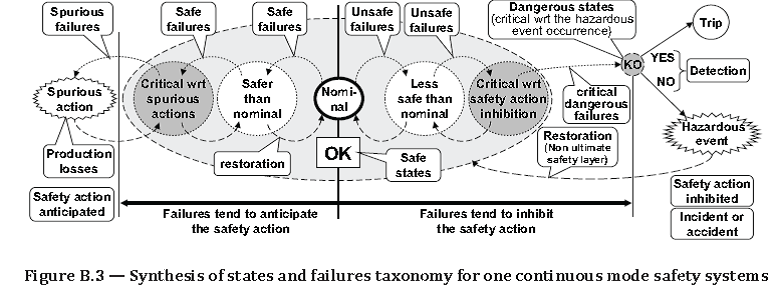Definition(s)
Dependability
ability to perform as and when required
Note 1 to entry: Dependability is mainly business oriented.
Note 2 to entry: IEC/TC 56 which is the international “dependability” technical committee deals with reliability,
availability, maintainability and maintenance support. More than 80 dependability standards have been published
by the IEC/TC56. In particular, it is in charge of the international vocabulary related to those topics (IEV 191[14])
and also of the methods used in the reliability field (e.g. FMEA, HAZOP, reliability block diagrams, fault trees,
Markovian approach, event tree, Petri nets).
Note 3 to entry: The
production availability is an extension, for production systems, of the classical dependability
measures. This term is defined in the ISO 20815[16] standard which deals with
production assurance and relates
to systems and operations associated with drilling, processing and transport of petroleum, petrochemical and
natural gas. The relationship between production-assurance terms can be found in Figure G.1 of ISO 20815[16].

[SOURCE: IEC 60050 −191].
Source: ISO/TR 12489:2013(E), Global Standards